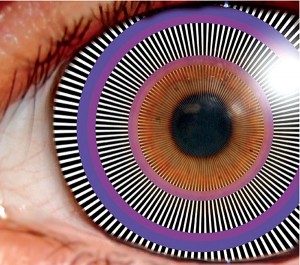A recent conversation accidentally ventured into the idea of profound and utter sophistication on which much of contemporary imagery is based vs. how thin the pictures and whathaveyou actually are. Digital images generally are especially vulnerable to this, but you could, and I will, say the same for a host of supposedly higher end work that includes output by Koons, Hirst, Tracey Emin and many others. ‘Output’ seems the most charitable way to characterize their work.
In the case of the latter grouping it’s not just that their work is commercial, but that this aspect is also woven into the work itself as a part of its overall sophistication. In Actuality™, there’s really very little there – it’s trickery straight out of the tube: the blues are just blue and the fake-out itself is faked, all toward building a greater supposed sophistication that is more of an idea than the idea that would ostensibly have been alchemized onto the canvas or wood, emerging as an enigmatic indicator lacking fingerprints or guile.
The image above, from a Scientific American article on art as visual research, is an easy target in this regard, and therefore not a target at all. Though artful, I don’t consider that stuff art. Just as others might, I don’t feel the need to – and that’s not because I reserve that term as a higher-order descriptor. Digital multi-media installations and giant cast-aluminum balloon poodles let themselves off of that hook. They’re mostly commentary, and I let them roam as such. Like my own actual dog who also knows where his next meal is coming from, they won’t go far.
I bring all this up here because the lack of sophistication in our art that leaves us cold bears a striking resemblance to the scrum that is green advertising. Everything and the kitchen sink is being crammed into showing how green your printer or my cleaning product is… but the sophistication and complexity that would even attempt to explain the sustainability of either is just not there. Like it or not, sustainability is a complex issue. Can one problems be solved without directly creating another? That’s what’s called a serious conundrum, one awaiting our attention deficits on many fronts, and no amount sharks in formaldehyde or filling a city street in three feet of green jell-O is going to illuminate, much less alter, potential routes out of these situations.
It is a change in thinking – one that includes a fight against falling back into a mere nostalgia for meaning. That itself is a trap, a false-floor cop-out nullified as a enabler of the some the artfulness described above. Apathy about society’s arc masks its general lack of sophistication on major issues. It’s fashionable, sure, but at some point seeming as though you’re throwing your hands up (or seeming as though you’re doing something about the problem) is going to largely affirm the succumb the pose was meant to signify in the first place.

